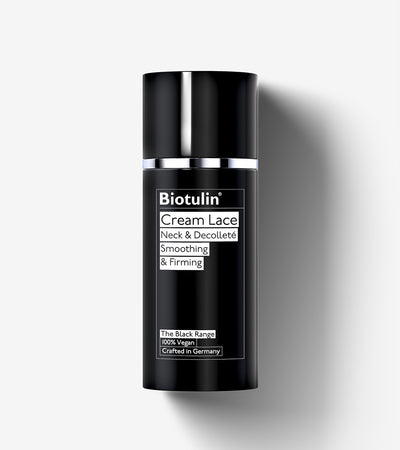Overview/Definition
Glyceryl stearate is a versatile and widely used ingredient in the skincare and cosmetic industry. It is an ester formed from glycerin and stearic acid, which can be derived from both plant and animal sources. This ingredient is known for its multifunctional properties, serving primarily as an emollient, emulsifier, and thickening agent in various formulations. Glyceryl stearate is a waxy, white solid that helps blend water and oil-based ingredients, making it essential for creating stable and smooth-textured products such as creams, lotions, and moisturizers.
Glyceryl stearate is produced through a process called esterification, where glycerin reacts with stearic acid. This process can be derived from natural sources like vegetable oils, including coconut, palm, or soy oil, making it a common ingredient in many natural and organic skincare products. The self-emulsifying version, known as glyceryl stearate SE, includes sodium or potassium stearate, which enhances its emulsifying properties, allowing it to mix oil and water more effectively without additional emulsifiers.
One of the key reasons glyceryl stearate is favored in skincare formulations is its ability to improve the texture and sensory feel of products. It provides a smooth, non-greasy application, which enhances user experience. Additionally, glyceryl stearate helps to stabilize formulations by preventing the separation of ingredients and reducing water loss, thereby extending the shelf life of products.
Beyond its functional benefits in product formulation, glyceryl stearate also offers significant skincare benefits. It acts as a lubricant on the skin's surface, giving it a soft and smooth appearance. It forms a protective barrier that helps to lock in moisture, preventing transepidermal water loss and keeping the skin hydrated and supple. This makes it particularly beneficial for individuals with dry or sensitive skin.
Glyceryl stearate is considered safe for use in cosmetics and personal care products. It has been evaluated by various regulatory bodies, including the U.S. Food and Drug Administration (FDA) and the Cosmetic Ingredient Review (CIR) Expert Panel, which have affirmed its safety and non-irritating properties. It is also readily biodegradable and can be derived from sustainable sources, aligning with the growing consumer demand for eco-friendly and ethically sourced ingredients.
Function in Skincare
Glyceryl stearate serves multiple functions in skincare products:
- Emollient: It softens and smooths the skin by forming a protective barrier that locks in moisture.
- Emulsifier: It helps to blend water and oil-based ingredients, creating stable and homogeneous formulations.
- Thickening Agent: It improves the texture and consistency of products, making them more pleasant to use.
- Skin Conditioning Agent: It enhances the skin's appearance by providing hydration and improving its overall feel.
Skin Type Suitability
Glyceryl stearate is suitable for all skin types, including sensitive skin. It is particularly beneficial for:
- Dry Skin: Helps to lock in moisture and prevent water loss.
- Sensitive Skin: Generally non-irritating and gentle, making it suitable for sensitive skin types.
- Mature Skin: Provides hydration and improves skin texture, addressing signs of aging.
Benefits
Glyceryl stearate offers several benefits for the skin:
- Improves skin hydration and prevents moisture loss.
- Enhances the texture and spreadability of skincare products.
- Forms a protective barrier on the skin, shielding it from environmental stressors.
- Softens and smooths the skin, improving its overall appearance.
- Stabilizes formulations, extending the shelf life of products.
Potential Side Effects or Risks
Glyceryl stearate is generally considered safe for use in skincare products. However, as with any ingredient, there is a potential for individual sensitivities or allergic reactions. It is always recommended to perform a patch test before incorporating new products into your skincare routine. If any irritation or adverse reactions occur, discontinue use and consult a healthcare professional.
Usage in Skincare Products
Glyceryl stearate is commonly found in a variety of skincare products, including:
- Moisturizers and creams
- Lotions and serums
- Cleansers and facial washes
- Sunscreens and after-sun products
- Hair conditioners and styling products
How it's used
To incorporate glyceryl stearate into your skincare routine, follow these best practices:
- Use products containing glyceryl stearate as part of your daily skincare regimen, applying them to clean, dry skin.
- Follow the instructions provided on the product packaging for optimal results.
- Combine with other complementary ingredients, such as hyaluronic acid or ceramides, to enhance hydration and skin barrier function.
Scientific Studies/Research
Several studies have evaluated the safety and efficacy of glyceryl stearate in skincare products. Research has shown that glyceryl stearate is non-sensitizing, non-phototoxic, and non-photosensitizing, making it a safe ingredient for use in cosmetics. Additionally, studies have demonstrated its effectiveness in improving skin hydration and texture.
Other Names/Synonyms
Glyceryl stearate may also be listed under the following names:
- Glyceryl monostearate
- GMS
- Glycerol monostearate
- Octadecanoic acid, monoester with 1,2,3-propanetriol
Sustainability/Environmental Impact
Glyceryl stearate is readily biodegradable and can be derived from sustainable, plant-based sources. When sourced responsibly, it has a low environmental impact and is not considered a bioaccumulative or toxic substance. Consumers are encouraged to choose products that use sustainably sourced glyceryl stearate to minimize environmental concerns.
Fun Facts
- Glyceryl stearate is also used as a food additive and is generally recognized as safe (GRAS) by the FDA.
- It occurs naturally in the human body and is involved in various biological processes.

